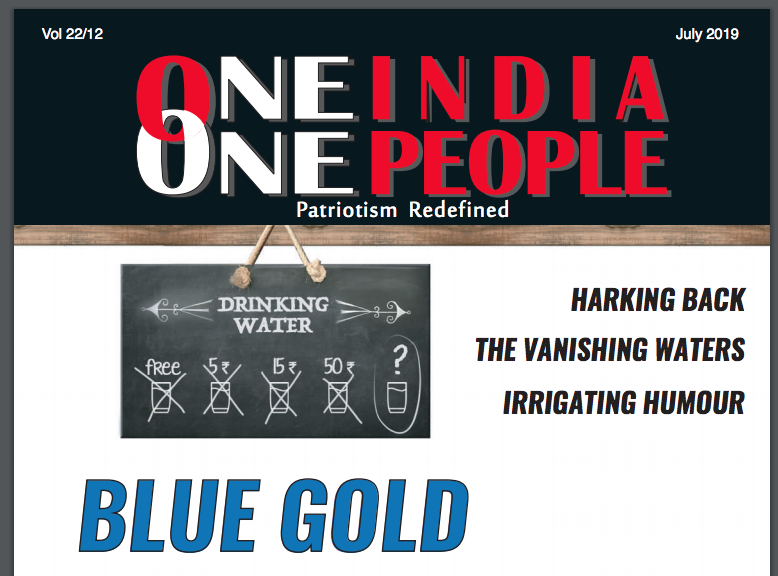Sustainably saving water OIOP-July-2019
Published on by Dr. Arvind Kumar, India Water Foundation - President in Social
Water shortages have been identified by industry, government, academia, and civil society as one of the top three global concerns. India, home to 16 percent of the world’s population, has only four percent of the world’s water resources at its disposal. It is therefore imperative to link fresh water and sustainable development, to ensure no one is left behind, says Dr. Arvind Kumar.
Article from One India One People-

The human right to safe drinking water places obligation on States to ensure that services are affordable. More than two billion people are compelled to drink contaminated water, resulting in a child dying every minute of every hour of every day. Without safe drinking water, it is harder for women and girls to lead safe, dignified, productive, and healthy lives. It is now widely recognised that the primary determinant for addressing the issues of global poverty is the provision of safe water; access to safe water enhances the potential for educational opportunities (particularly for girls), and facilitates participation in local community economic development. It would be safer to say that economic security is also at risk due to lack of clean water.
When clean water arrives in a community, the impact ripples through every aspect of daily life. Freed from the persistent disease that results from dirty water and poor sanitation, their future becomes brighter, as does the economic prospects of their communities and countries. Women no longer have to spend hours every day fetching water that they know could well make their children sick and deplete their funds in availing medical facilities. Instead, they can spend more time helping their families, perhaps with time to boost the family income. Understanding the relationship between drinking water and good health is vital to population and public health. The need of the hour is to go circular by embracing the need to recover, recycle, repurpose, refurbish, repair, refuse, rethink, reduce, reuse and remanufacture.
Attainment of the targets of the SDGs (Sustainable Development Goals) within a stipulated period, along with achieving the targets of Paris Agreement on Climate Change, with water being at the core, can be facilitated by adopting new policies and programmes based on innovative techniques D Source: wasatchwater.org ONE INDIA ONE PEOPLE Jul 2019 05 and technology, along with new concepts of cooperation and partnership in tandem with existing concepts and approaches. Scientific concepts like new water, rewilding, use of green infrastructure, roof-top gardens, hold high potential to revive the water economy, and the application of circular economy principles can help us meet the changes to practice that will be necessary for it to meet future water demands. India, home to 16 percent of the world’s population, has only four percent of the world’s water resources at its disposal. Burgeoning demand for water due to growing population is projected to very soon overtake the availability of water.
Currently, our on-field experiences working in the ‘Aspirational Districts’ of Uttar Pradesh and Uttarakhand by way of community engagement and stakeholder consultation, resulted in understanding the problems and challenges of the aspirational indicators underlying the water sector; basic education, health, infrastructure, financial inclusion, and skill development. It summed up to the absence of clean drinking water, and as discussed earlier, led to 80% of the illnesses prevalent in rural India, which further prevented children from attending schools. It forms a vicious cycle, and we have to work towards breaking this cycle.
READ THE FULL ARTICLE ATTACHED OR HERE
Media
Taxonomy
- Human Rights
- Water Supply
- Water Supply Protection